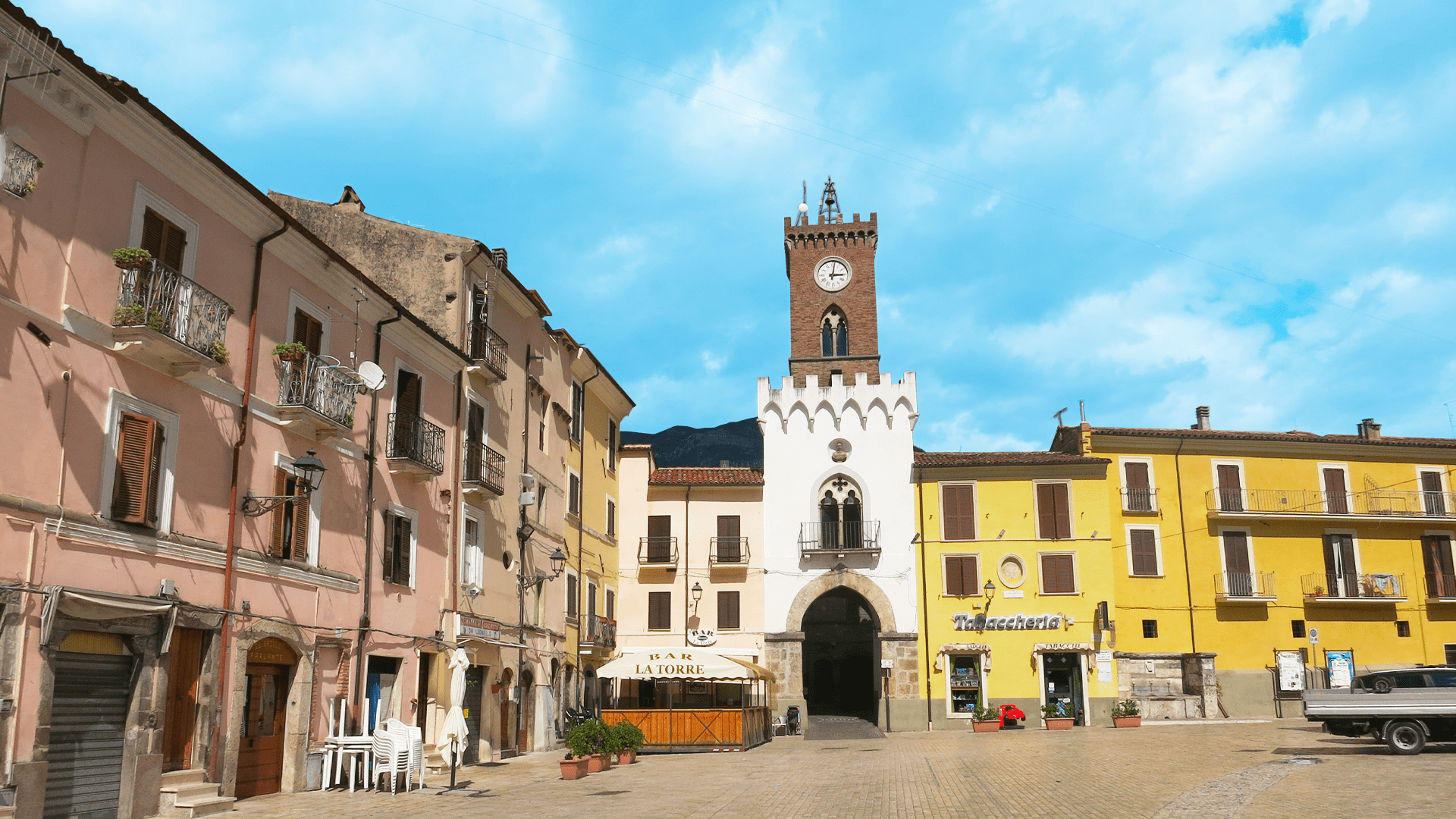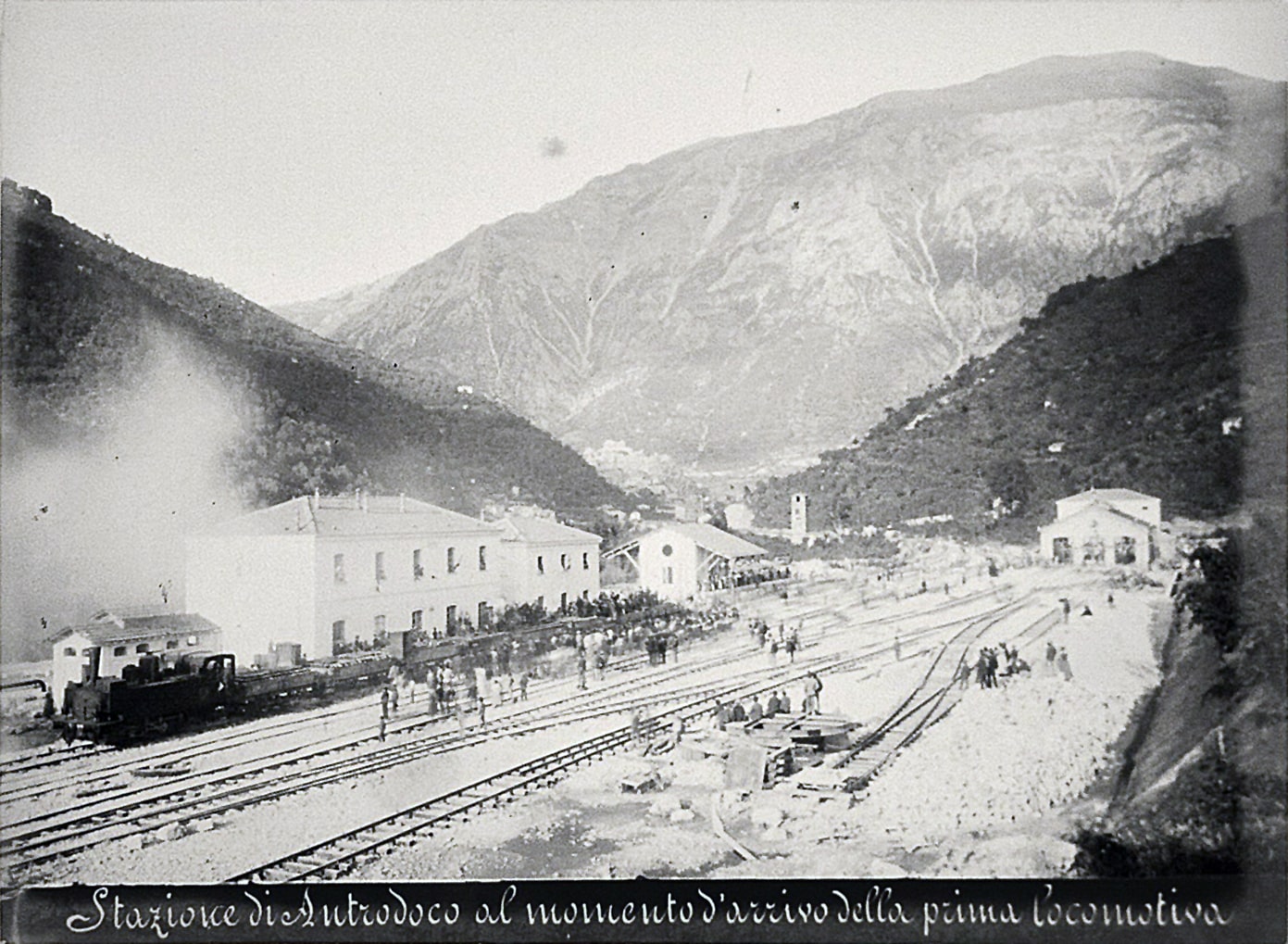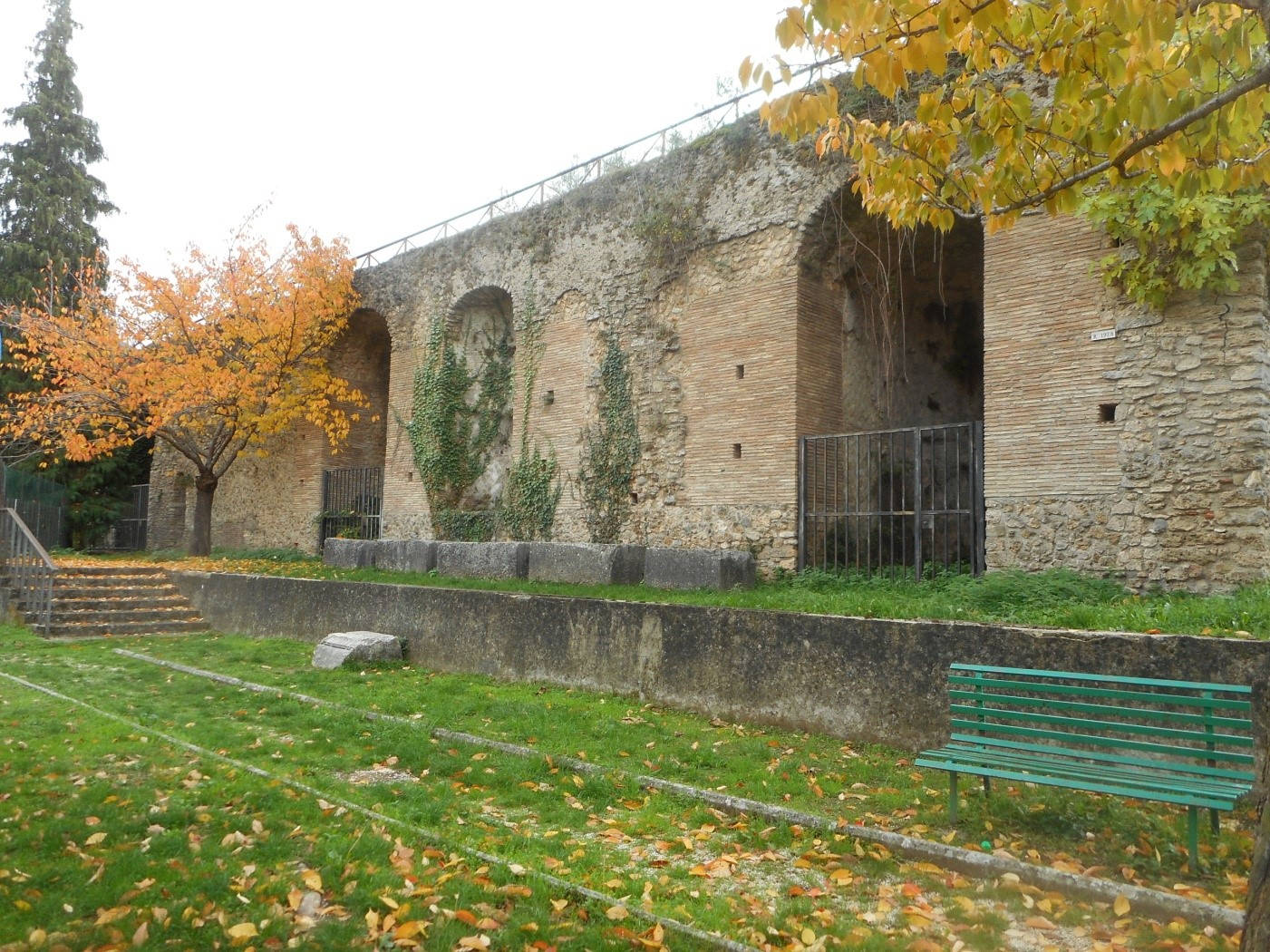




Antrodoco - Borgo Velino
The station of Antrodoco-Borgo Velino is located in the municipality of Antrodoco, of which it was the only station until 1956. However, it is closer to Borgo Velino: the two villages now form a single built-up area.
Lying in the narrow valley between the mountains of Rieti and the massif of Mount Nuria, Borgo Velino – called Borghetto until 1863 – arose in the 14th century, during the Angevin period, as a result of the aggregation of old villages that dominated the surrounding mountains. At the beginning of the 14th century, when all the castles in the valley were called up to participate in the foundation of Cittaducale, one of them, Forca Pretola, considered the area chosen for the new town to be too distant and refused to contribute to the expenses. This opposition was harshly punished by the inhabitants of the other castles, who went so far as to raze Forca Pretola to the ground, seeing it as a threat to their future town. The poor survivors had no choice but to emigrate down in the valley, developing a small pre-existing settlement, the future Borgo Velino.
In the 16th century Borghetto was given as a fief by Emperor Charles V, King of Naples, to his daughter Margaret, from whom it passed to the Farnese dukes, her descendants. Elisabeth, heir to the dynasty, bequeathed the village to her son Charles, who became King of Naples under the name Charles III.
Like the entire upper Velino Valley, Borgo Velino was part of the province of Aquila degli Abruzzi, until the establishment of the Province of Rieti in 1927.
The old town centre retains its regular urban layout and the appearance of a small medieval village.
Appena fuori del centro storico si trova il cosiddetto “Ninfeo dei Flavi”: interpretato tradizionalmente come parte di una villa dell’imperatore Vespasiano, si è ipotizzato che fosse una semplice cisterna, ma è forse il ninfeo di un santuario di Diana.
The upper part of the sanctuary was later used for Christian worship with the construction of the church of San Francesco in Valle, an old monastery of the Friars Minor, now abandoned.
An inscription on the outer wall of the ancient church of Saints Dionysius, Rusticus and Eleutherius, located on the outskirts of the town and traditionally associated with the legendary figures of the Magi, is said to be linked to this place of worship.
The castle of Collerinaldo, locally called “Cornallo”, has always been associated with the village. Settled on a green slope, it dominates the entire valley surrounded by nature and watched over by centuries-old chestnut trees. Colle Rinaldo was born as a garrison of Borghetto. The first records of its existence date back to the 15th century, when the majestic tower keep, now in ruins, was built.

Project by Riattivati Youth Cultural Association
With contributions from: FAI – Fondo per l’Ambiente Italiano ETS, INTESA SANPAOLO, Rotary Club Rieti
Thanks To the promotion comittee: Amici di Rieti, Associazione Culturale Giovanile Riattivati, Rotary Club Rieti e Associazione Collezionisti “Sabatino Fabi”
